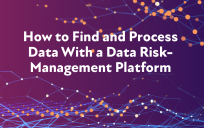In our private lives, we interact every day with brands and services that shape our expectations of how government should engage with us. Applying for public services should be as easy as online shopping. And when agencies fall short, we remember.
“When you have an experience that’s less than satisfactory … with government, it impacts how you feel about [it] and decreases trust,” said Jonathan Alboum, Federal Chief Technology Officer at ServiceNow, a company that facilitates agency transformation. But as organizations improve how they engage with us, “we begin over time to really see the government as confident, as capable, as an entity here to help us,” he said.
“The more we think about a person’s experience with government, and we demonstrate empathy … the better we can align the way we serve them to the things they most need,” he said.
Metrics Matter
That’s difficult. Even when funding is plentiful, agencies often launch projects before understanding how work and data flow through the organization. “We oftentimes need to take this step back and show humility around the process or thing we design, and recognize that it might not be right,” Alboum acknowledged. When things go well, you need metrics as proof.
You need a good baseline, he said, for what you replaced or improved: hard data that shows how the modernization qualitatively enhanced someone’s life. Previously, did it take three days to process a transaction, and now it takes three minutes? With metrics, he explained, “you [can] go tell that story to Congress, to your constituents, to whoever wants to listen, that you made [something] better.”
Field Work
Technology is not the end goal: It’s a vehicle to serve the public. Alboum believes government employees should see their agency’s mission in action whenever possible. “I was a CIO for the Department of Agriculture,” he said. “I went to farms, to meat processing plants, … to embassies to see foreign agriculture service at work…. Because you have to understand what it means for people to be using the technologies that you’re offering as an organization.” When someone comes to you with a requirement or request, you appreciate the reason why.
Seamless Technology
Constituents want seamless, frictionless experiences, what Alboum described as, “let me go to one place, express what I need, and get everything I need.” To achieve that, agencies should follow human-centered design concepts and adopt a scalable platform, such as ServiceNow’s, that integrates disconnected systems and processes and uses automation to help drive outcomes, he said.
With the ServiceNow platform, “you’re able to create a modern user experience very quickly, one that supports mobile devices,” without waiting to modernize the underlying legacy tech, he said. The U.S. Fish and Wildlife Service, as shared during the 2023 Federal Forum, uses the ServiceNow platform to develop an e-permits system, so people can visit one website and apply for various public-land licenses. It’s an example, Alboum said, of “ServiceNow embrac[ing] the idea of, ‘let’s make government as simple as possible.’”
This article appears in our guide, “How to Kickstart Modernization.” For more ideas about how to make the case for modernization that agency leaders and legislators find compelling, download it here:






Leave a Reply
You must be logged in to post a comment.